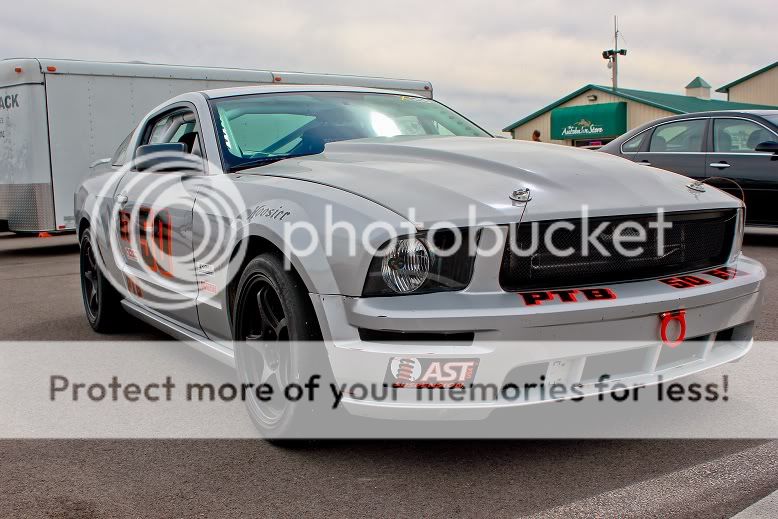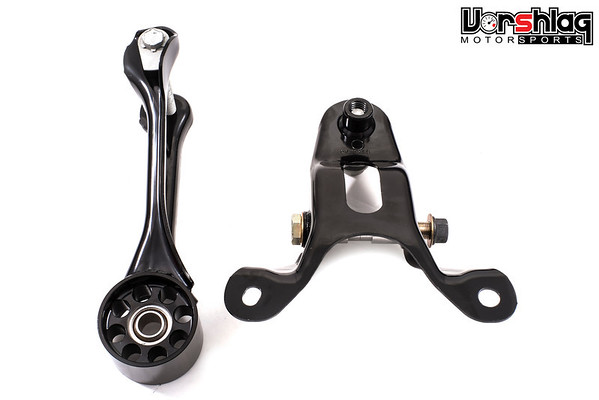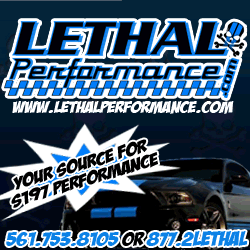At Sam Stranos' suggestion I changed My Brembo Package to a a Steeda Sport / Koni Sport package. I live in Los Angeles, which has recently been confirmed by NHTSA has having the worst roads in the U.S.. The Steeda Sports were too stiff. The ride was uncomfortable even on full soft. Too many bad roads to tolerate that set up. In one year, I had already blown out a ball joint and a set of Koni yellows that I am now having rebuilt. That is how bad the roads are. If I lived in Northern California or San Diego where the roads are better, it would have been fine. However, the rear Steeda Sports still do not give you enough suspension travel. And on rough roads at high speed the car became stiff and bouncy and dangerous.
Yep, have heard similar stories from hundreds of folks. OEM length struts + lowering springs = BAD NEWS. But Konis can work well in competition use, with a lot of "but ifs". If you run a lowering spring, they will bottom out constantly. They are virtually the OEM length, afterall. Koni makes a super short version for some cars (Miatas and Civics) to address this limitation. The ride quality is also "limited", and I wouldn't use them on the street. I drove a customer's 2012 GT today with Konis and it rides terribly, in my opinion.

Even a shortened coilover can still be run too low, where it is slamming around on the bumpstops and damaging the shocks. With the proliferation of cheap Chinese coilovers we are seeing this more and more in the stance crowd. As bad or worse then the stock strut/lowering spring issues.
I switched to Boss Springs and Koni yellows and it was a match made in heaven. Much more suspension travel. Less driveway scraping. Much more compliant on the road. Not quite as stiff as I would like at the track, but the compromise is well worth it and the car is still much faster than I am. It is not the Springs holding me back.

Tall (OEM) ride heights (like the Boss302 LS above, under braking at MSR-Houston) will always have more suspension travel, ground clearance, and such. Which is great for a street only car. But the statement "It is not the Springs holding me back" is pretty subjective. I'd wager you would be significantly faster on virtually any type of race track with a lower ride height and more spring rate, along with properly sized coilover shocks and struts. We saw 4 second drop in time on a 2 minute road course with a monotube coilover shock & spring change on an OEM 2013 GT (below), same conditions / tires and bars / driver / camber plates. That is, well, a lot.

Also, we need to give Ford Engineers a little more credit. The compromises they made between performance and comfort are sensible. They have tested these cars more than everyone on this forum has collectively. There is a good reason the Boss springs are softer in the front then in the back and I am totally down with it. To give up liveablility for some incremental increase in theoretical track performance makes no sense.
Well... that's not the only reasons they chose the OEM spring rates and lengths. OEM suspension engineers (and yes, I know some) have an impossible job: make the car SAFE for EVERY possible driver, yet have good performance and a perfect ride. Oh, and they need to be able to traverse crazy weather conditions, dirt roads, steep inclines, and speed bumps. And don't spend any real money, because these are still Fords here, not 911 GT3s. Impossible goals because they are conflicting goals. Even Boss302 owners don't get the best bits, because at least 1/2 (probably a lot more) of these buyers are folks who will never track these cars, and many end up stored in garages collecting dust.
So the result ends up as a huge compromise, even on the Boss302. Sure, they managed a decent "balance" on track (with a front spring rate bias, which everyone that understands suspensions gravitates towards on this chassis) and some commendable performance (remember when the Boss302 was being compared to the E92 M3, favorably, because it was matching or beating the $70K M3s times on road courses?) but the Boss302 is still jacked up in the air like a 4X4. They are still super soft (we've tested the spring rates) and flop around like a dead fish when you push them. Look at the in-car video with the "before and after" of Konis + lowering springs vs ASTs (with softer front rates than we use by 150#/in), in the post by SoundGuyDave above. That "massive brake dive" issue is much worse with the stock ride height/spring rate/shock set-up.

I've driven lots of these S197 5.0 and Boss302 cars, on the street and on track, from the basic Boss302 to Boss302LS and even Boss302-S. The "street car" Boss isn't much better than a Brembo equipped Mustang GT, honestly, when it comes down to lap times. Sorry, it is within a second or less on a typical road course. And your goals of "not to give up liveability" may not jive with everyone that owns one of these cars.

But the 302-S race car that Ford sanctioned and built has real money remote reservoir monotube coilover shocks, significantly more spring rate and a much lower ride height than the plain jane Boss302. Because it won't ever see snow drifts, snow chains, dirt roads, and the other unusual requirements for an OEM suspension from Ford. It actually drives pretty nicely on the street, too.
Well I will disagree on the "track and only track" statement, respectfully. Have you ever tracked a car with real coilovers?If you are interested in track and only track performance, spend $2600+ on coilovers. Otherwise Boss springs and Koni yellows are a good combination.
We have a lot of happy customers with AST, Moton and MCS coilovers who do use their cars on track but are still predominantly daily driven street cars. I'd say at least 80% of the monotube coilovers we've sold ended up on street driven cars. Why? Because you CAN get significantly more track performance with a proper coilover set-up and still have excellent ride, if you have the right guidance. The best way to understand this it to EXPERIENCE THIS FIRST HAND by riding in a car that has monotube coilover shocks... seeing is believing, and you will will be spoiled for LIFE.

Sam had has poor results with his handful of ASTs he bought for himself and a couple of customers, many years and multiple revisions ago. We had a couple of customers that had the very same problems during the same time period, but we worked a little bit and found a real solution (a completely different AST built rear shock that we made fit these cars, rather than the inverted and too long unit that AST made on the first batch), with excellent results. Eventually AST Holland finally switched all AST 4100 and then 4150 builds for the S197 to this same length and style shock, with no serious issues on this line since.

I've got one of the very first S197 4100 sets from 2009 still running on the street and track to this day (we used them for 2.5 years and they've been on a customer's car ever since) using this alternate rear shock design we picked in early 2011 (non-inverted version with proper stroke). We've moved this set to 3 different cars and 5 different drivers. We could have slammed AST publicly and gone on a smear campaign, then been fired as a dealer, but decided to work with those guys and come up with a better solution. In the end what we helped come up with works and we've had a lot of happy customers and successful sales since then.
Sam won't ever recommend or sell that brand of shock, and he will probably talk most folks out of monotubes (he is a reluctant MCS dealer), as he seems to be a die-hard OEM-style Koni guy. And he's done well in autocross events with those shocks, especially using stock length springs (F Stock), so more power to him. But does that F Stock set-up work for everyone?

What I'm saying is that if you want a adjustable and lower then stock ride heights, real spring rate choices, maximum amount of usable suspension travel at a lower ride height, more performance and a good ride quality, you need to look seriously at quality monotube coilovers. That is an option that the nay-sayers cannot drown out, no matter how loudly they proclaim the evils of this brand or that. We simply have too many happy customers on these types of shocks with real results and excellent ride quality (on dual purpose cars).
Again, the best advice I can give is to find somebody on an AST, MCS or Moton and ride in their car. Then you can see for yourself and make your own judgements... it cannot be explained away, you simply have to experience this first hand to believe it.
Cheers,
Last edited:












 For an all-out race car build, yes, get a 1-piece driveshaft. For a street car? You won't notice the difference.
For an all-out race car build, yes, get a 1-piece driveshaft. For a street car? You won't notice the difference.





